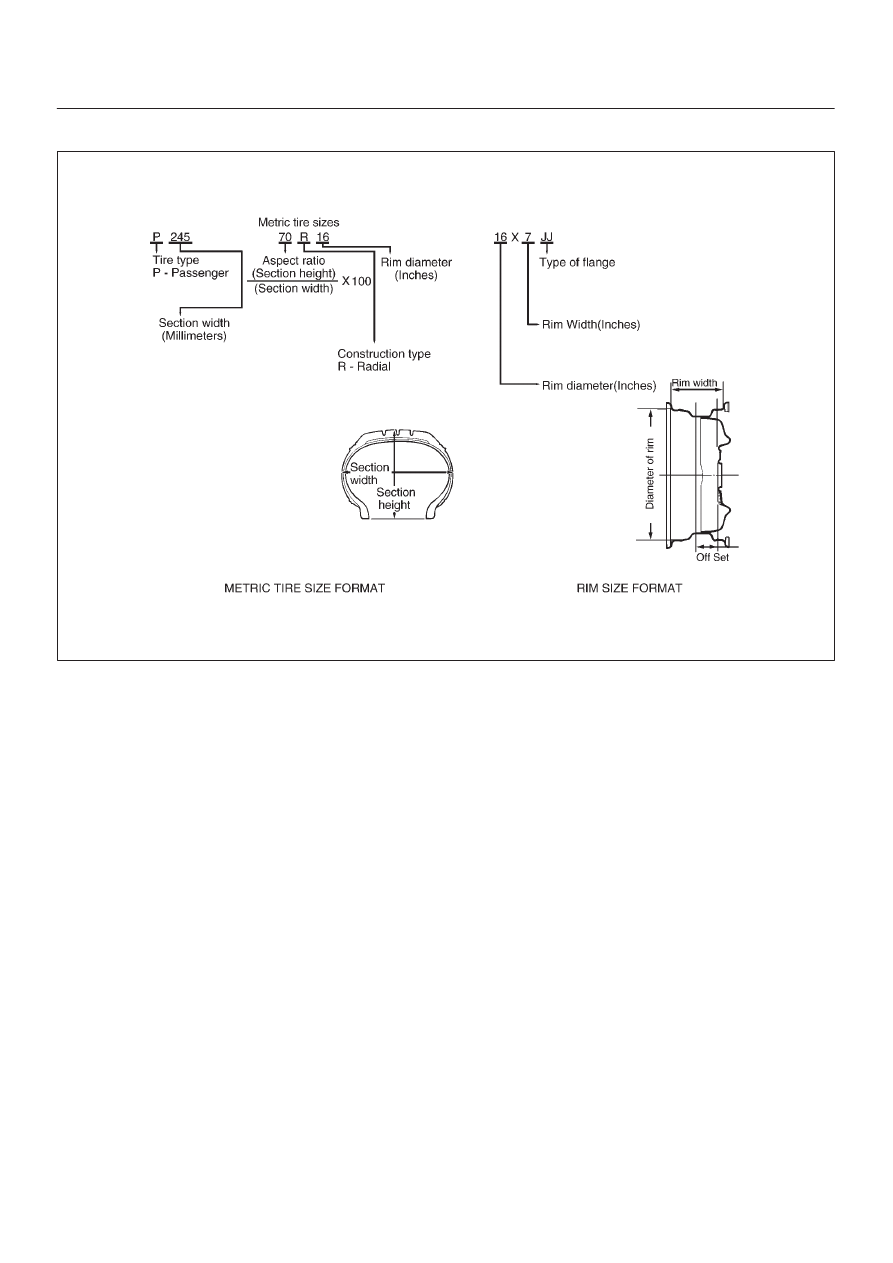Isuzu Amigo / Axiom / Trooper / Rodeo / VehiCross. Manual - part 595

3E–2
WHEEL AND TIRE SYSTEM
General Description
480R200012
Replacement wheels or tires must be equivalent to the
originals in load capacity, specified dimension and
mounting configuration. Improper size or type may affect
bearing life, brake performance, speedometer/odometer
calibration, vehicle ground clearance and tire clearance
to the body and chassis. All model are equipped with
metric sized tubeless steel belted radial tires. Correct tire
pressures and driving habits have an important influence
on tire life. Heavy cornering, excessively rapid
acceleration and unnecessary sharp braking increase
premature and uneven wear.